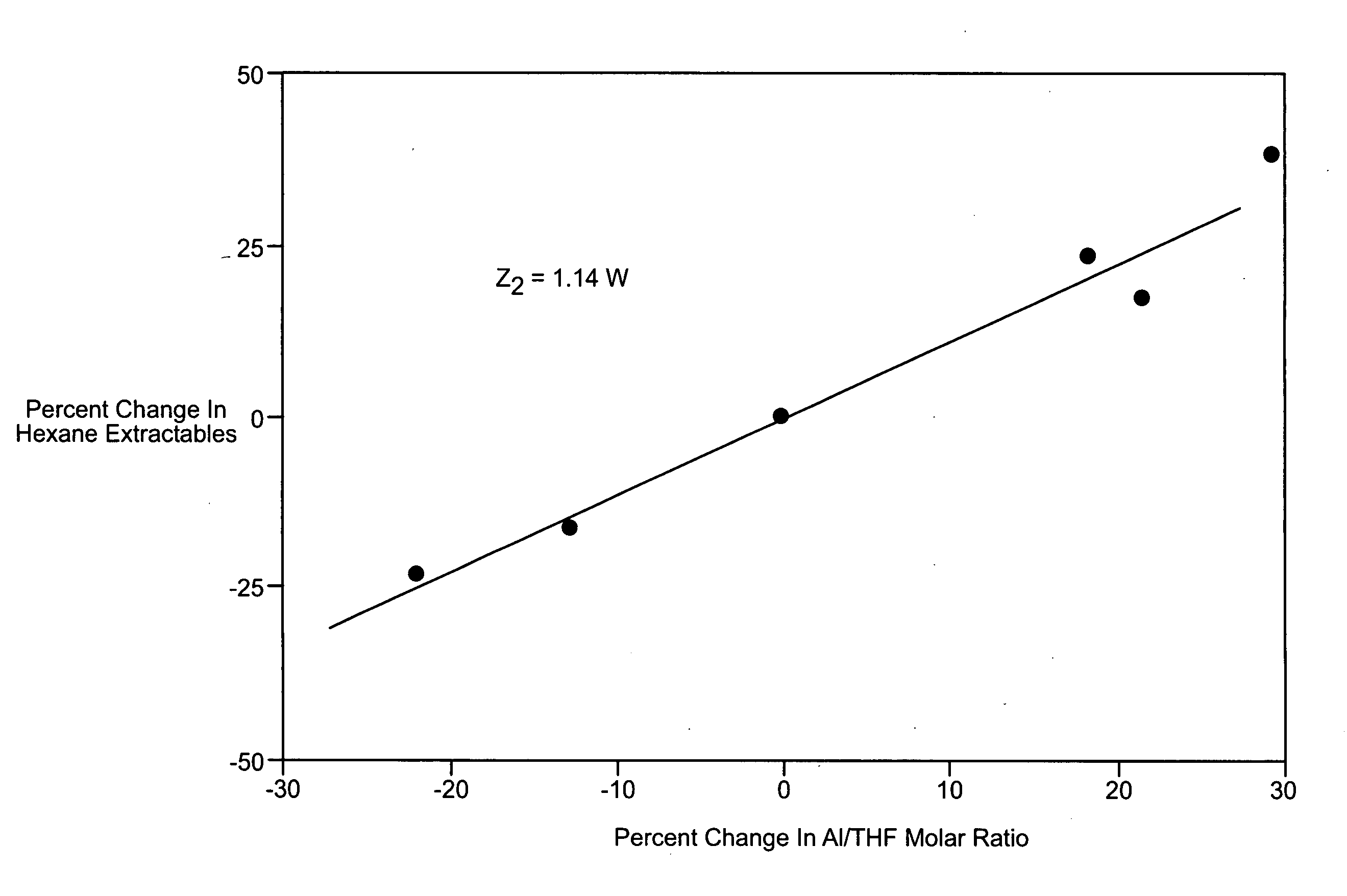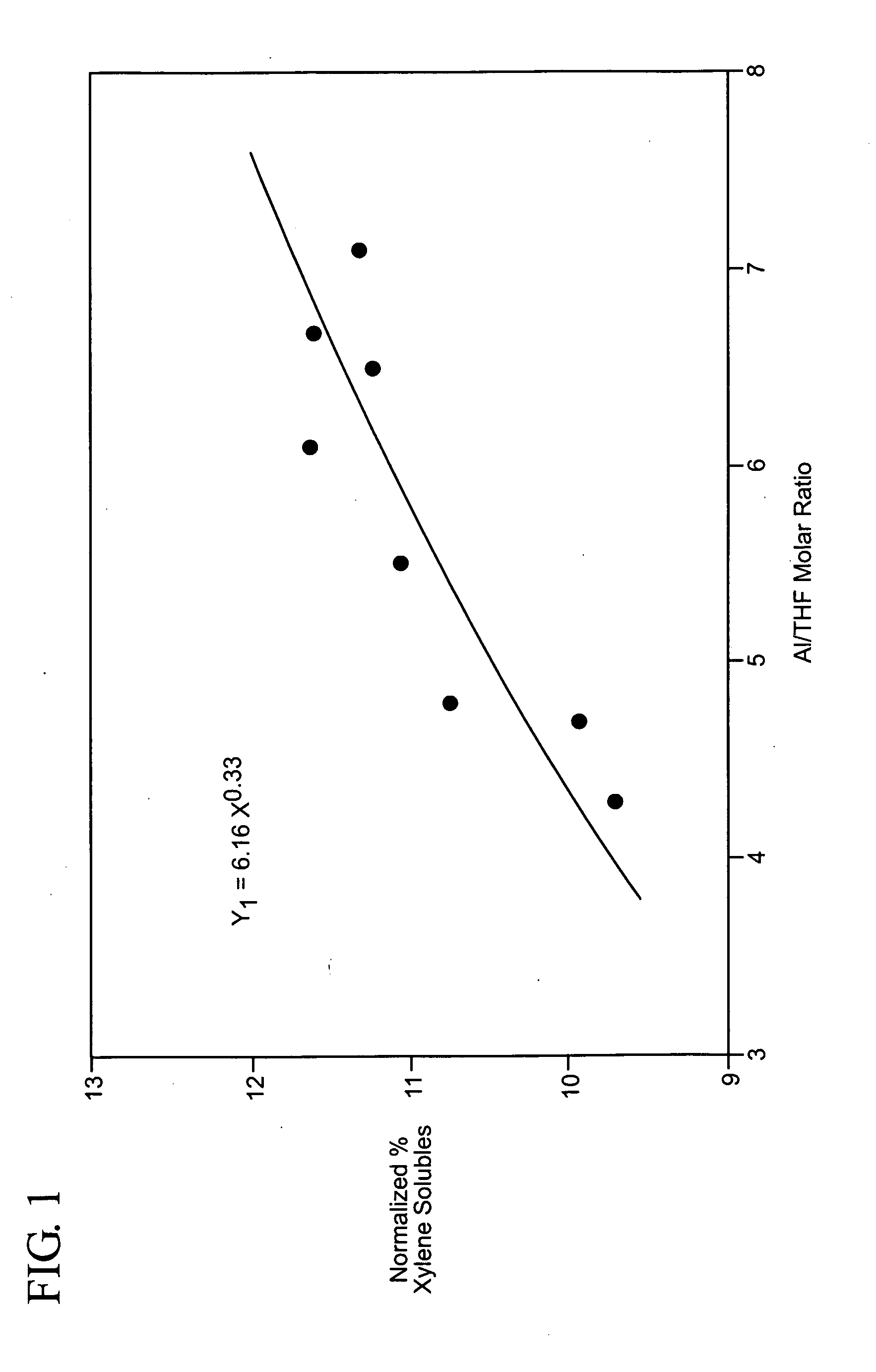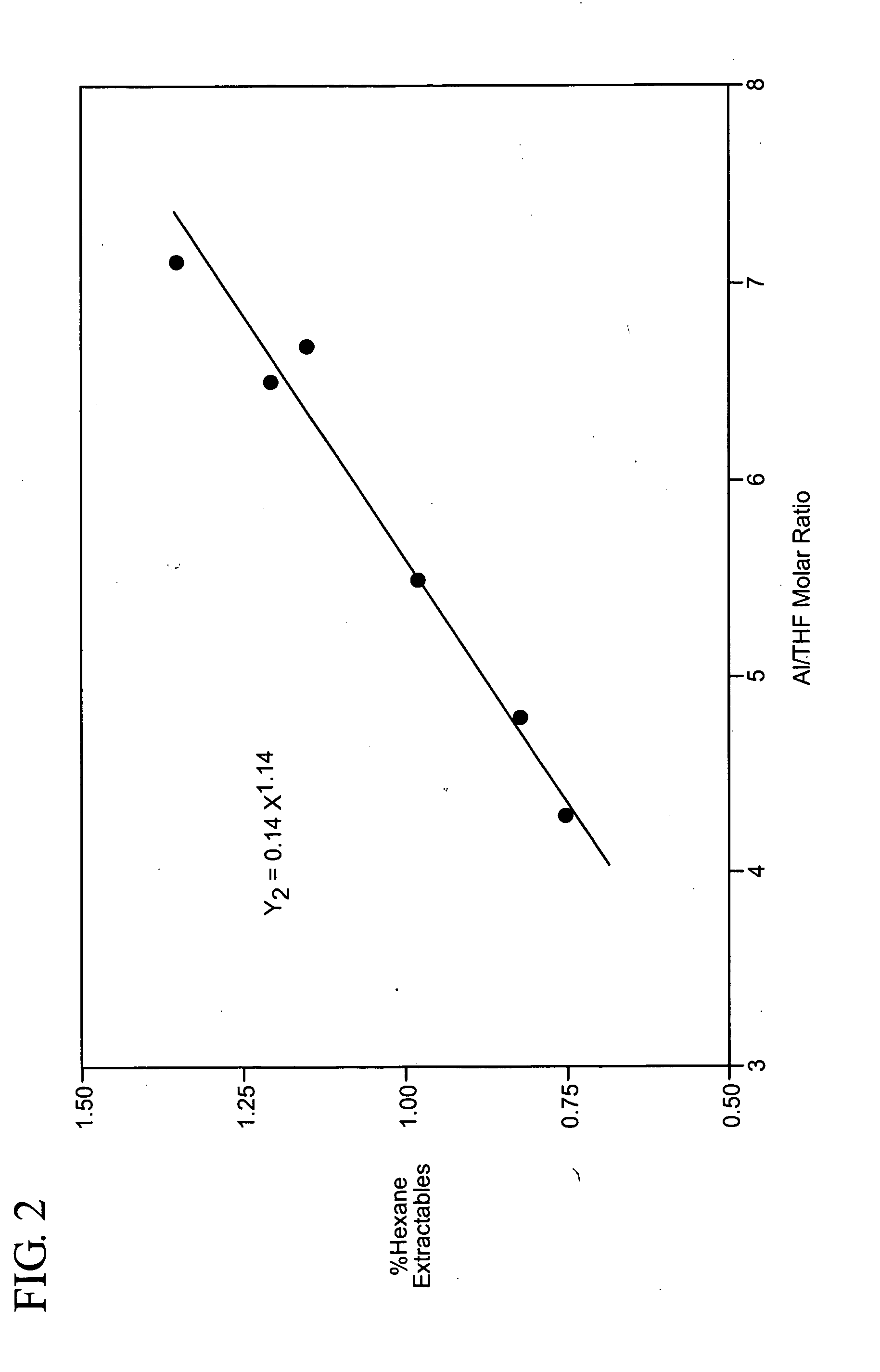Preparation of LLDPE having controlled xylene solubles or hexane extractables
a technology of hexane extractables and xylene solubles, which is applied in the field of linear low density polyethylene, can solve the problems of undesirable blockage and high blockage requirements, and achieve the effect of high film blockage and high xylene solubles or hexane extractables
- Summary
- Abstract
- Description
- Claims
- Application Information
AI Technical Summary
Benefits of technology
Problems solved by technology
Method used
Image
Examples
examples
[0042]A Ziegler-Natta catalyst is prepared as follows.
[0043]An initial amount of microspheroidal MgCl2.2.8 C2H5OH is prepared according to the method described in Example 2 of WO98 / 44009 but operating on a larger scale. The stirring conditions during the preparation are adjusted to obtain the desired average particle size. The microspheroidal MgCl2-EtOH adduct is subjected to a thermal treatment under nitrogen stream over a temperature range of 50-150° C., to reduce the alcohol content. The adduct contains 28.5 wt % of EtOH and has an average particle size of 23 microns.
[0044]A 500 mL four-necked round flask is purged with nitrogen, charged with 250 mL of TiCl4 at 0° C., and then charged with 10 grams of the above-described adduct under stirring. The temperature is raised to 130° C. and maintained at that temperature for 2 hours. The stirring is discontinued, the solid product is allowed to settle, and the supernatant liquid is siphoned off. An additional amount of TiCl4 is added to...
PUM
| Property | Measurement | Unit |
|---|---|---|
| molar ratio | aaaaa | aaaaa |
| molar ratio | aaaaa | aaaaa |
| molar ratio | aaaaa | aaaaa |
Abstract
Description
Claims
Application Information
 Login to View More
Login to View More - R&D
- Intellectual Property
- Life Sciences
- Materials
- Tech Scout
- Unparalleled Data Quality
- Higher Quality Content
- 60% Fewer Hallucinations
Browse by: Latest US Patents, China's latest patents, Technical Efficacy Thesaurus, Application Domain, Technology Topic, Popular Technical Reports.
© 2025 PatSnap. All rights reserved.Legal|Privacy policy|Modern Slavery Act Transparency Statement|Sitemap|About US| Contact US: help@patsnap.com



